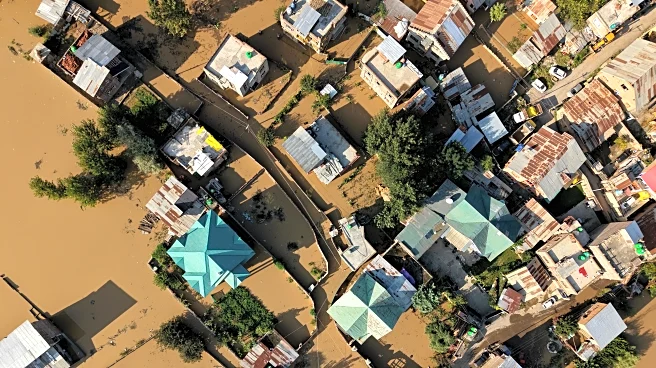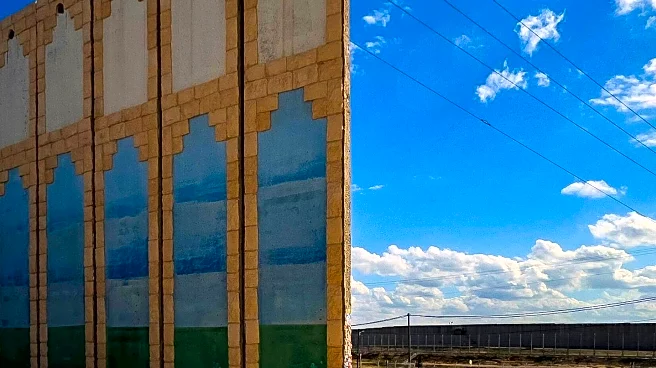What's Happening?
Donald Judd's Architecture Office in Marfa, Texas, has undergone a significant restoration, completed by the Judd Foundation. The project, costing $3.3 million, aimed to preserve the original condition of the building, which Judd had initially purchased in 1990. The restoration faced challenges, including a fire in 2021 that damaged much of the interior and roof. Despite these setbacks, the restoration incorporated sustainable adaptations such as night flushing for cooling, glazing on windows, and solar panels. The building now showcases architectural models and design prototypes, reflecting Judd's original use of the space.
Why It's Important?
The restoration of Donald Judd's Architecture Office is significant for preserving the cultural and historical legacy of one of the 20th century's influential artists. It highlights the importance of sustainable practices in architectural restoration, particularly in desert climates. The project also contributes to the economic and cultural revitalization of Marfa, Texas, a town closely associated with Judd's work. By maintaining the integrity of Judd's vision, the restoration supports the continued appreciation and study of his contributions to art and architecture.
What's Next?
The restored Architecture Office is set to open to the public in September, offering visitors a chance to experience Judd's work and philosophy firsthand. The Judd Foundation plans further restorations in Marfa, continuing its efforts to preserve Judd's legacy. The inclusion of the Donald Judd Historic District in the National Register of Historic Places earlier this year underscores the ongoing recognition of Judd's impact on art and architecture.
Beyond the Headlines
The restoration project raises broader questions about the balance between preserving historical authenticity and integrating modern sustainability practices. It also reflects the growing trend of recognizing and preserving the work of artists who have significantly influenced cultural landscapes. The project serves as a model for how historical sites can be adapted to meet contemporary environmental challenges while maintaining their original character.













